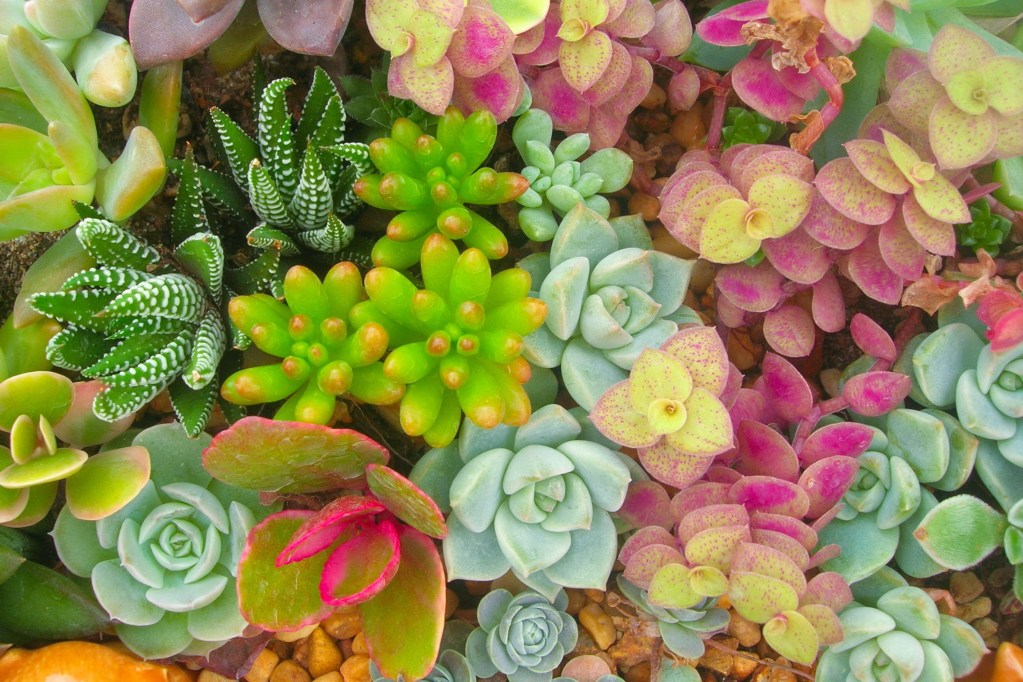
The cardinal rule of succulent care is to avoid overwatering. Native to hot deserts, succulents store water inside their fleshy stems and leaves to prepare for drought. Many species also have waxy cuticles that prevent them from losing water due to evaporation in warm, arid climates. But like all plants, succulents need water.
If you’re wondering how to water succulents, you’re not alone. While you want to err on the side of underwatering your succulents, your plants will appreciate a drink every now and then. But do you water your succulents from the top or bottom? And how often should you water your succulents? We’ve rounded up a few tips on watering your succulents and cacti to keep them thriving.
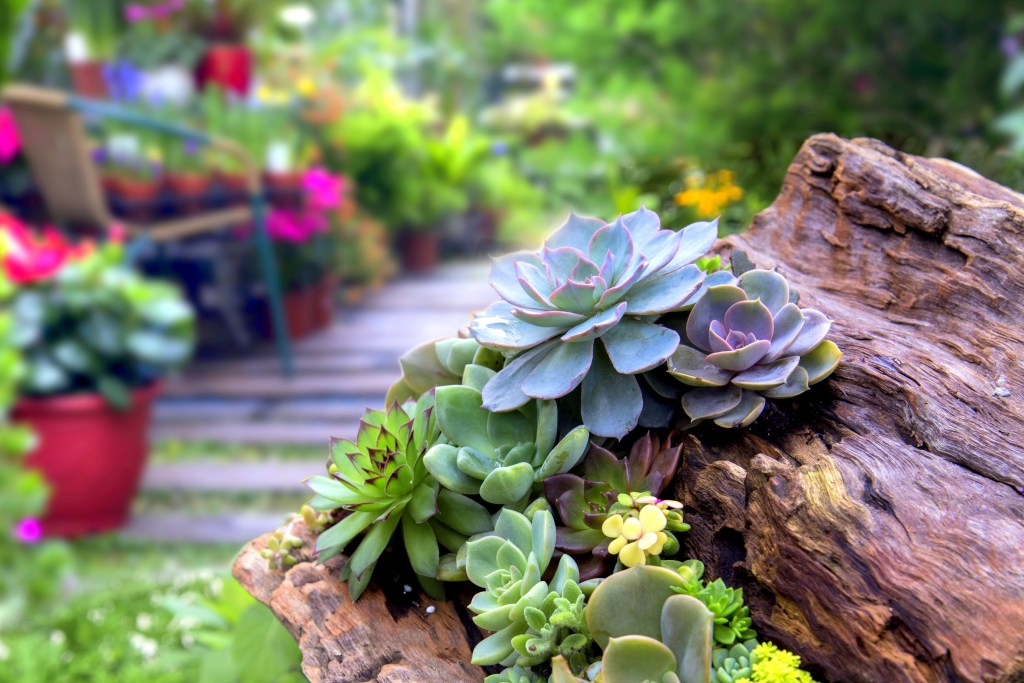
1. Only water your succulents when the soil is dry
Your soil should be completely dry before you water your succulents — otherwise, signs of root rot might wreak havoc on your plants. To check how dry your soil is, stick your finger into the top inch of the soil. Also, feel the drainage hole to gauge if the dirt is wet at the bottom and check the weight of your pot to see if your plant is saturated with soil.
If the planter feels lighter than usual, your succulents will likely appreciate a drink of water. For a more exact way to check soil, consider investing in a moisture meter, which can probe deeper than your finger. Look for a reading of zero or a number close to it before fetching the watering can.
Physically, a telltale sign of a thirsty plant is shriveled, soft foliage. A succulent that needs more water will wrinkle and pucker, telling you that it wants water. On the flip side, an overwatered succulent will have brown or yellow leaves that feel extra swollen — leaves may start falling off, too.
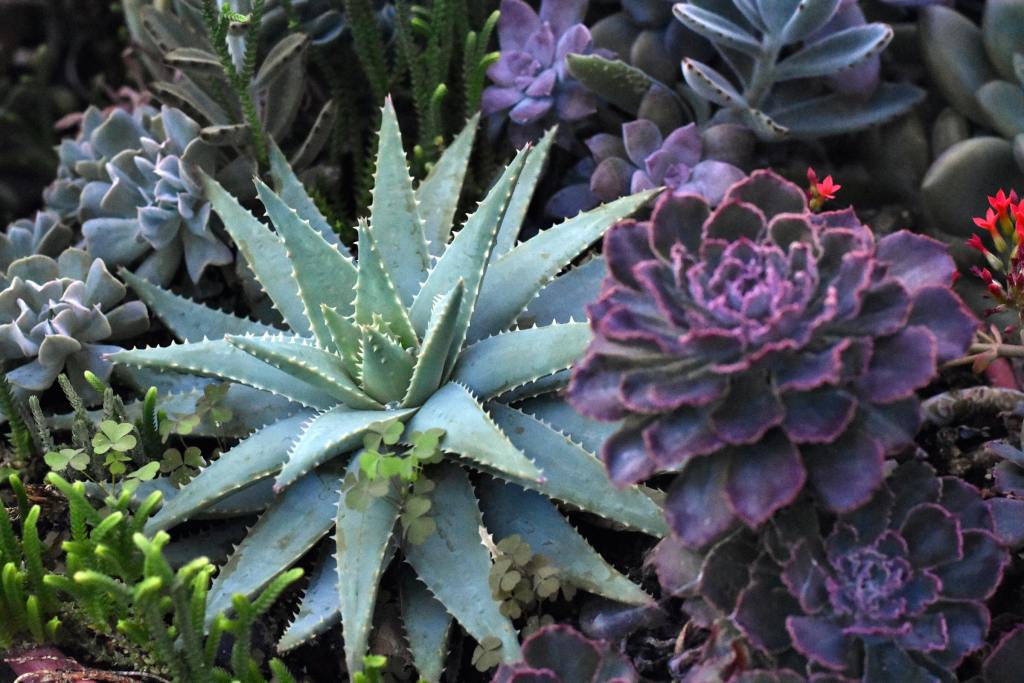
2. Water your succulents thoroughly
Wondering how much to water succulents? Instead of small, frequent sips, succulents enjoy thorough, infrequent watering. If you water from the top, drench the plant until water leaves the drainage hole. Even then, keep running water through the pot a few times to make sure the bottom part of the soil absorbs water as well.
Before the succulents get another thorough watering, make sure the soil feels bone dry. A note on misting: Avoid using a mister to water your succulents. While you might see people misting succulents on TV and movies, this isn’t a very realistic way to water succulents. Misting doesn’t allow for thorough watering, which can cause leaves to shrivel and roots to die. Additionally, it can create water stains or rot on the leaf surface, which no one wants to deal with!
So, how do you water succulents without drainage holes? This undertaking is a risky endeavor, and you’ll want to err on the side of underwatering. To avoid drowning your plant, a good rule of thumb is to water about half the volume of your planter. Make sure to keep your succulents inside lightweight, fast-draining soil, too. Your safest bet is to leave your plants inside their nursery pot and use the decorative one as a cachepot. Note that if you repot your succulents, a terracotta or ceramic planter is more forgiving than a plastic one, since it absorbs excess water.

3. Consider bottom watering your succulents
Do you water succulents from the top or bottom? The truth is, either way can help quench your plant’s thirst! Bottom watering isn’t just for typical tropical foliage houseplants — it’s also a great way to make sure succulents receive the right amount of water.
Top watering is as easy as it gets, but sometimes the water doesn’t quite get to the soil at the bottom of your planter, even if you see it leaving the drainage hole. Bottom watering ensures that all the soil gets water so that the succulent’s roots can grow and thrive. To bottom water a succulent, place your planter in a tray filled with water. When the top of the soil feels wet, remove the pot from the tray.
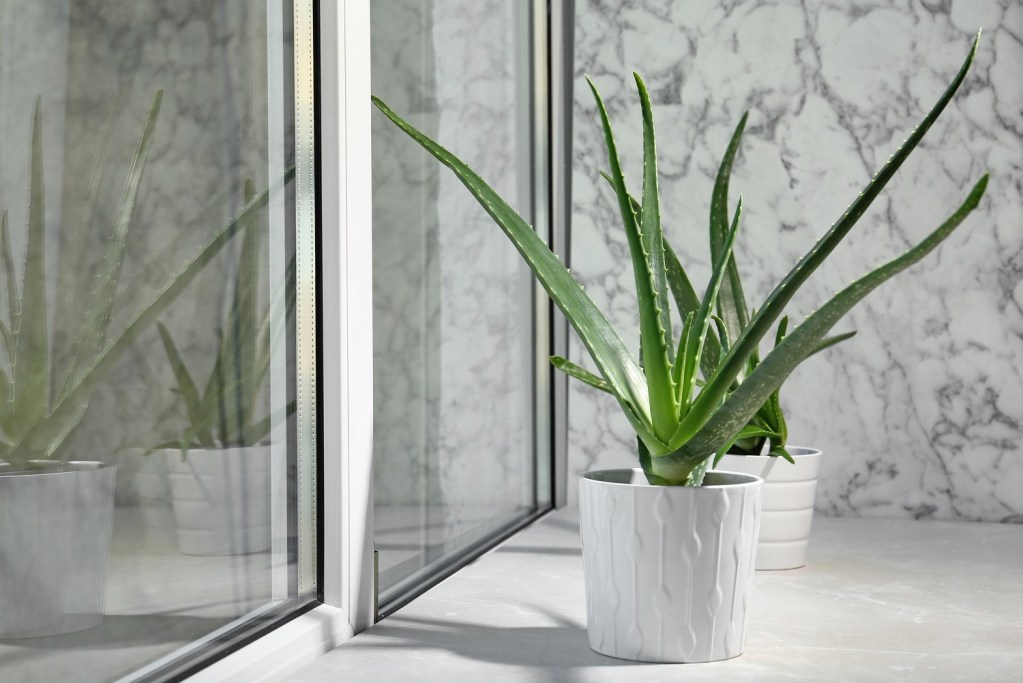
4. Cut back on watering in the winter
How often succulents should be watered depends on many factors, including light, temperature, and location. But in most cases, soil will dry out faster during the summer. When it’s warm, water your succulents every one to two weeks, depending on whether you keep them inside or outside. In general, cut back watering during the winter to once a month or whenever the soil completely dries out. Since there’s not as much light or warm air, water won’t evaporate as quickly.
Succulents go into a dormant state during cold weather, and overwatering them during this time can lead to root rot or fungal infections. To prevent overwatering, give your succulents a drink early in the morning so that the water has time to evaporate throughout the day.
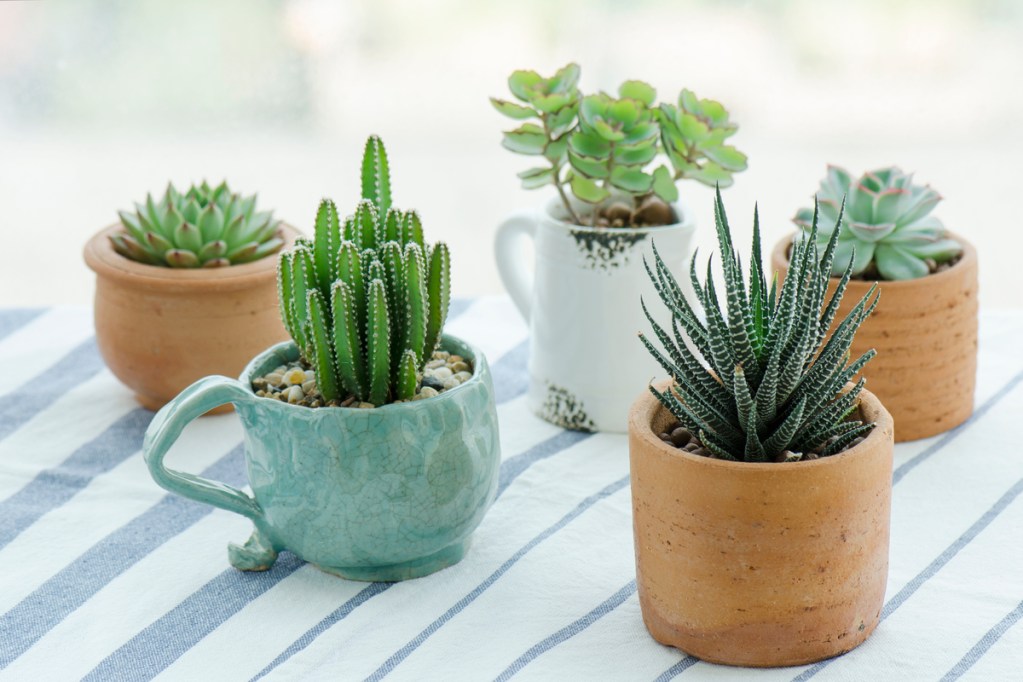
5. Water smaller containers more often
You’ll want to be watering contained succulents more often than in-ground succulents. Within the realm of succulent container gardening, the size of your container will play a major part in how frequently you’ll be reaching for your watering can. What you’ll want to remember is that soil will dry out faster in smaller pots. If you have a succulent in a 4-inch planter, you’ll be watering it more often than your succulent in a 12-inch planter.
Bear in mind that shallower pots will require more frequent watering. If you have a 12-inch window box that’s no deeper than a typical 4-inch pot, you’ll still likely be on the same watering schedule for both vessels.
Watering succulents can be a process of trial and error that’s unique to every home. Nonetheless, your succulents will eventually need a drink every so often. With these tips in mind, you’ll be on your way to maintaining fresh and hydrated succulents soon enough!



